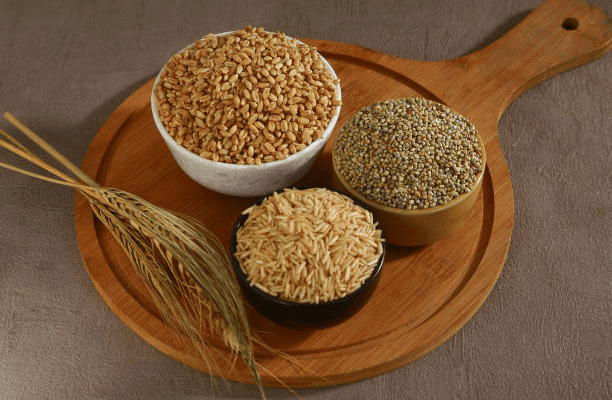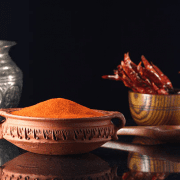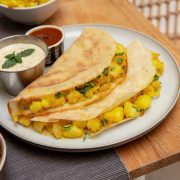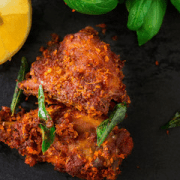Ancient grains beyond rice and wheat have been used in Indian cooking throughout its history, India is known for its diverse culinary traditions. Although rice and wheat are the staple of the Indian diet today, they were preceded by a rich heritage of traditional cereals which nourished this subcontinent for thousands of years. These ancient grains are not just a look back into our culinary past but also offer a sustainable and healthy alternative going forward.

Forgotten Stars of Indian Agriculture
Even before the Green Revolution popularized high-yield varieties of rice and wheat, India’s fields harbored numerous resilient and nutritious grains. Based on local climatic conditions and soil types, these ancient grain crops formed the foundation stone of regional cuisines across India. The story behind every grain narrates about how creative culinary creativity was combined with agricultural innovation to produce them.
Millets: The Nutri-Cereals
These millets are often referred to as “nutri-cereals” and may be considered as most prominent among ancient grains of India. In India many species such as finger millet (ragi), sorghum (jowar) or pearl millet (bajra) have been cultivated since over four thousand years now. Millets are low in water use efficiency so they can easily survive droughts that cause other crops to fail; this also means that they need minimal watering and spraying with chemicals because their roots go deep down into ground.
Amaranth: The Grain of Gods
This is called ramdana or God’s own food it is a grain that has been grown in India for several centuries while it regarded as one of Aztec staple foods that was produced there earlier on. This tiny seed is filled with protein including all nine essential amino acids making it complete protein source. In laddoos or popped like popcorn then it might be eaten at breakfast you will find amaranth chocolate tasting.
Buckwheat: The Himalayan Superfood
Although it has a name that gives it away, buckwheat does not belong to the wheat family. It has been a staple in Indian parts of the Himalayas where it’s called kuttu. Rich in antioxidants and gluten-free, buckwheat flour is used to make traditional dishes such as kuttu ki puri during fasting times.
Revival of Ancient Grains in Modern Indian Cuisine
India is gradually rediscovering its ancient grains seed. Thus chefs and ordinary people are using these cereals on their menus to give them modern tastes. Nowadays many health-conscious urbanites would prefer ragi pancakes, jowar upma or bajra khichdi.
This revival is more than just a passing food fad; it is a journey towards healthier and more sustainable diets. These old grains have greater climate resilience, reduced water requirements and low soil fertility tolerance. By eating more kinds of grain we can improve our diets as well as biodiversity and support sustainable agriculture systems.
Health Benefits of Ancient Grains
The nutritional profile for these traditional Indian cereals is remarkable. Many ancient grains contain lots of fiber which helps to promote digestion and maintain healthy gut bacteria. They are also rich sources of minerals, vitamins, anti-oxidants etc. Calcium can be obtained from foods like Ragi while iron together with magnesium may be found in Amaranth plus Buckwheat respectively.
Moreover, some of these grains have lower glycemic indices than polished rice or refined wheat thus they are suitable for diabetes management or weight control purposes. Additionally the high amount of dietary fibers present contribute to satiety feelings thereby managing one’s weight accordingly
Inclusion of Ancient Grains in Your Diet
Should you be in Bangalore and wish to have a feel of ancient grains, then consider yourself lucky. The city’s dynamic food offers many opportunities for one to taste these old-fashioned cereals both in traditional and innovative ways.
Ancient grains are now being used by a number of hotels in Bangalore. From ragi dosa that is taken for breakfast to jowar biryani which is taken during dinner there is no lack of choices. Some restaurants may even offer fusion dishes such as amaranth risotto or buckwheat pasta which mix Indian ingredients with international cuisines.
For those who like cooking at home, there are various types of ancient grains that can be found in the local markets and organic stores within the city of Bangalore. Playing around with these grains beyond rice and wheat will give you an exciting experience as well as a sense of pride. Begin by changing some regular flour with ragi or jowar flours while preparing rotis in your kitchen, or attempt creating a plain millet porridge recipe for your morning meal.
Learn About HOGR’s Ancient Grain Scene in Bangalore

Are you ready to go on a culinary adventure using ancient grain? Simply download HOGR app and have access to booking tables from the best restaurants around your place. We have also compiled several restaurants’ menus containing these authentic Indian cereals into our list.
The world of ancient grains beyond rice and wheat whether you are an experienced food lover or an amateur food explorer interested in exploring India’s diversified cuisine through its taste, nutritional composition and culture is an extraordinary path that takes people through the aspects discussed above. By rediscovering such traditional cereals, we shall not only be familiarizing ourselves with our cultural usages but also actively promoting healthier diets that abet sustainable agriculture.
Therefore, when planning your next meal why not choose foods beyond rice and wheat? Discover the amazing array of India’s ancient grain varieties and take a bite of the past. You will be grateful to yourself when you taste these grains as they are not only good for your health but also delicious.
Also Read- The Growing Popularity of Fermented Foods in India

















[…] Also Read- India’s Ancient Grains Beyond Rice and Wheat […]